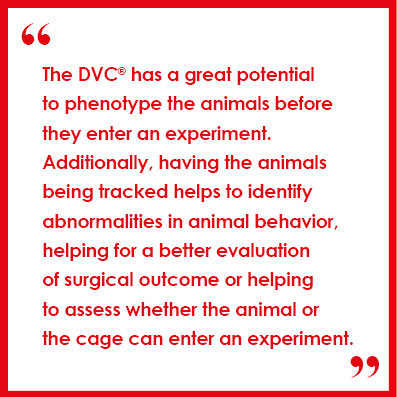
The current version of the Tecniplast website doesn't match your region. Please visit your local website to find information and offerings specific to your country.

The current version of the Tecniplast website doesn't match your region. Please visit your local website to find information and offerings specific to your country.


Scientific Director of Digilab Solutions in Tecniplast, Stefano Gaburro works to spread the knowledge of the Tecniplast's Home Cage Monitoring Solutions across the community.
Part of the Digilab Team, Dr. Gaburro also collaborates with Frontiers in Neuroscience.
Stefano can you tell us a little bit more about your professional life?
I have a Biomedicine background with a PhD in Neuroscience. After 8 years of successful academic work with a focus on animal models for different disease models generation, I entered into Industry, helping clients with telemetric DSI solutions. I have been working in Tecniplast for 1 year as Scientific Director for Digilab Solutions to spread the knowledge of the Tecniplast's Home Cage Monitoring solutions (DVC®) across the community, highlighting the animal welfare and scientific aspects of it.
How did your collaboration as guest editor in Frontiers in Neuroscience begin?
We started a Research Topic on Home Cage Monitoring to produce a paper collection of new technologies: studies in terms of design and results to set new standards in terms of reproducibility, translation in respect of the welfare standards.
 A recent article published by Frontiers in Neuroscience, identifies the DVC® system as the solution to discover novel activity patterns potentially correlated with sleep and rest disturbances in mice models. Can you tell us more?
A recent article published by Frontiers in Neuroscience, identifies the DVC® system as the solution to discover novel activity patterns potentially correlated with sleep and rest disturbances in mice models. Can you tell us more?
It introduces a new way of determining neuromuscular disease progression in a debilitating disease such as Amyotrophic Lateral Sclerosis (ALS). In fact, based on locomotion patterns detected 24/7 non-intrusively, the researchers with the excellent help of Tecniplast’s Data Scientist could detect obvious alteration at circadian rhythm and quantify them with a newly developed metric called Regularity Disruption Index (RDI). With the help of this parameter, researchers could identify, along with classical behavioral output, disease progression directly from the home cage in stress-free conditions.
The study shows the importance of the DVC® system in an ALS study. In which other applications do you think that DVC® can bring a high added value for researchers?
These findings reveal that any disease in which sleep patterns are changed are potentially detectable directly from the home cage. To name a few common alterations in sleep patterns are known in Alzheimer's and Parkison's disease or sleep-changes such as in narcolepsy.
 What do you think about the DVC® system, as a researcher and as Scientific Director?
What do you think about the DVC® system, as a researcher and as Scientific Director?
The DVC® system is paving the way to new study designs because animals can be tracked where they are born avoiding confounding factors.
The DVC® has a great potential to phenotype the animals before they enter an experiment. Additionally, having the animals being tracked helps to identify abnormalities in animal behavior, helping for a better evaluation of surgical outcome or helping to assess whether the animal or the cage can enter an experiment.
Which is the added value you think DVC® can offer to their facilities?
It can help to:
Read the article "A non-invasive digital biomarker for the detection of rest disturbancesin the SOD1G93A mouse model of ALS": Click here
GIORGIO ROSATI
SENIOR PRODUCT MANAGER DIGILAB - TECNIPLAST S.P.A.